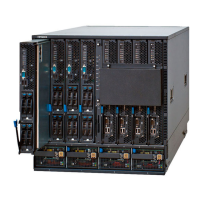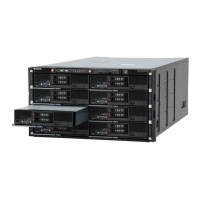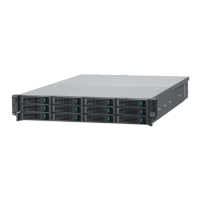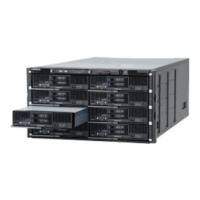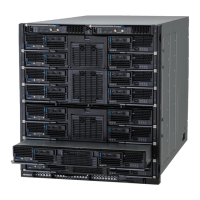How to fix distorted display when operating Hitachi Compute Blade 2500 Server Web console?
- DDaniel MooreSep 7, 2025
If the display is distorted when operating the Web console, refresh the Web browser.
How to fix distorted display when operating Hitachi Compute Blade 2500 Server Web console?
If the display is distorted when operating the Web console, refresh the Web browser.
What to do if a wrong WWN was used to obtain a license key for Hitachi Switch?
If the WWN used to obtain a license key for your Hitachi Switch is incorrect, you should contact the dealer from whom you purchased the license package.
What to do if Hitachi Compute Blade 2500 Server UEFI does not start and screen flashes?
If, when displaying the UEFI window from a remote console, the screen flashes and UEFI does not start, press the Enter key. If this does not resolve the issue, restart the remote console.
Why does the cursor not respond to mouse input on Hitachi Compute Blade 2500?
If the cursor on the operating system of a remotely connected server blade does not respond to mouse input, verify that the mouse mode setting is supported by the operating system of the server blade. If the problem persists, switch to a different mouse mode and then revert to the correct mode. If the problem still persists, restart the remote console.
What to do if keystrokes are not recognized on Hitachi Compute Blade 2500?
If keystrokes are not recognized by the operating system of the remotely connected server blade, verify whether there is a setting on the operating system of the server blade that means it will reject key operations (for example, Scroll Lock). Cancel the status if necessary. If the problem persists, restart the remote console.
Why is Hitachi Compute Blade 2500 Server system console slow when multiple remote consoles are started?
When multiple remote consoles and virtual media consoles are started, the operation of the system console can become slow, and memory usage can be too high. To mitigate this, use a maximum of 256 MB of memory for each process when running the remote console or virtual media console.
What to do if Hitachi Compute Blade 2500 Server remote console displays 'This application cannot be started'?
If the message "This application cannot be started" is displayed and the remote console cannot be started, in the Java control panel, click the General tab, and then under Temporary Internet Files, click the Settings button. In the displayed dialog box, verify that the Keep temporary files on my computer check box is selected.
How to fix Java VM startup error when starting Hitachi Compute Blade 2500 Server remote console?
If a Java VM startup error message is displayed, and the remote console cannot be started, or if an older version of the remote console starts, in the Java control panel, click the General tab, and then under Temporary Internet Files, click the View button to display the temporarily saved applications. Delete these files.
What to do if keystrokes are not entered or continue without stopping in Hitachi Compute Blade 2500 Server remote console?
If keystrokes continue to be entered without stopping, or are not entered at all when using the remote console, deactivate the remote console window using the mouse, and then re-activate the window. If the problem persists, exit and restart the remote console.
What to do if Hitachi Server remote console cannot be started and displays 'xxxx cannot be downloaded'?
If you receive the message "xxxx cannot be downloaded" and the remote console fails to start, go to Internet Explorer, click Tools, select Internet Options from the menu. In the dialog box, click the Advanced tab and ensure that the Do not save encrypted pages to disk check box is not selected.
| Form Factor | Blade |
|---|---|
| Processor | Intel Xeon |
| Operating System Support | Windows Server, Linux |
| Memory | Up to 192 GB per blade (DDR3) |
| Storage | SAS/SATA HDD/SSD per blade |
| Network Interfaces | 10Gb Ethernet |
| Product Type | Blade Server |
Overview of the CB 2500 server chassis and modules.
Details performance expansion types and key features of CB 2500 server blades.
Explains the role and functionality of the management module in the system.
Describes the internal LAN and management LAN for system communication.
Lists hardware and software requirements for the system console.
Outlines the general steps for initial setup of the CB 2500 system.
Describes the server chassis, its slots, and ID tag.
Describes slots and location tags for installing blades and modules.
Details the appearance of a full-wide blade, its slots, and connectors.
Details the appearance of a half-wide blade, its slots, and indicators.
Details the appearance of the management module, its connectors, and indicators.
Describes the appearance of the management LAN module.
Describes the appearance of the switch module.
Details the appearance of the power supply module, its connectors, and indicators.
Details the appearance of the fan module, its indicators.
Describes how to connect the system unit to the power supply.
Explains how to prepare the system console for CB 2500 configuration.
Explains how to connect the system console to the management module.
Describes the procedure for logging into the management module.
Guides on changing the administrator password for security.
Explains how to set the chassis ID for identifying system units.
Details changing network addresses for system components.
Guides on preparing server blades for Logical Partitioning (LP) mode.
Explains powering on a server blade using Web, CLI, or remote console.
Explains how to reset the power of a server blade via management module.
Guides on restarting the BMC of a server blade if a failure occurs.
Guides on configuring the Unified Extensible Firmware Interface (UEFI) for a server blade.
Describes how to power off a running server blade.
Explains how to forcibly power off a server blade when OS is unresponsive.
Details how to power off a switch module.
Explains how to power off the entire server chassis.
Provides important notes and considerations for using the remote console.
Describes how to start the remote console.
Lists available functions and commands for the remote console.
Guides on creating disk images for OS or application installation.
Explains how to properly exit the remote console.
Lists and explains common screen messages encountered with the remote console.
Provides procedures for troubleshooting remote console issues.
Explains how to issue an NMI to the OS on a server blade.
Details the physical and environmental specifications of the server chassis.
Provides specifications for different CB 2500 server blade models.
Details the specifications for 1/10Gb LAN and Brocade 10Gb DCB switch modules.
Lists the specifications of the 2500W power supply module.
Details the specifications of the cooling fan modules.
Guides on taking memory dumps in Windows operating systems.
Explains how to take memory dumps in Linux operating systems.
Details the procedure for taking memory dumps in VMware environments.
Provides a schedule for cleaning tasks and their intervals.
Explains how to clean ventilation holes using a cloth or vacuum.
Describes the service life of major hardware components.
Outlines the end user license terms for the CB 2500 firmware.

